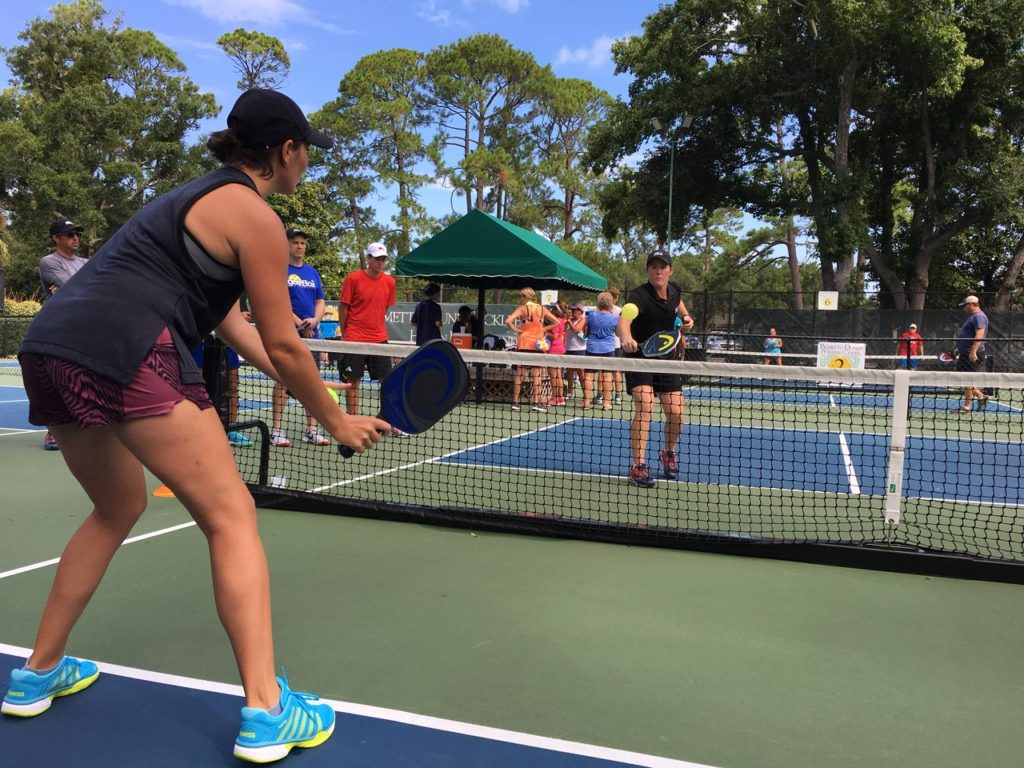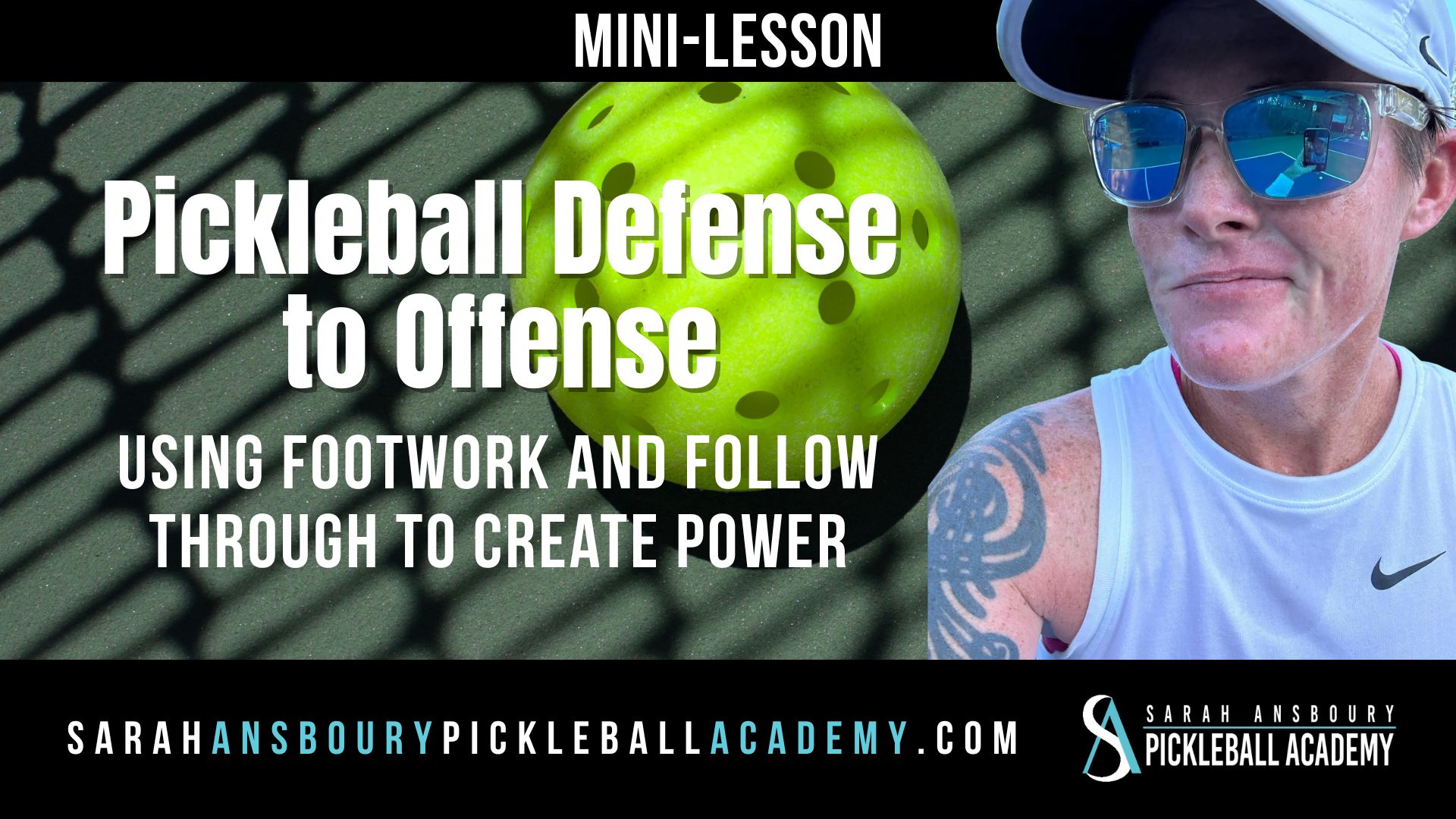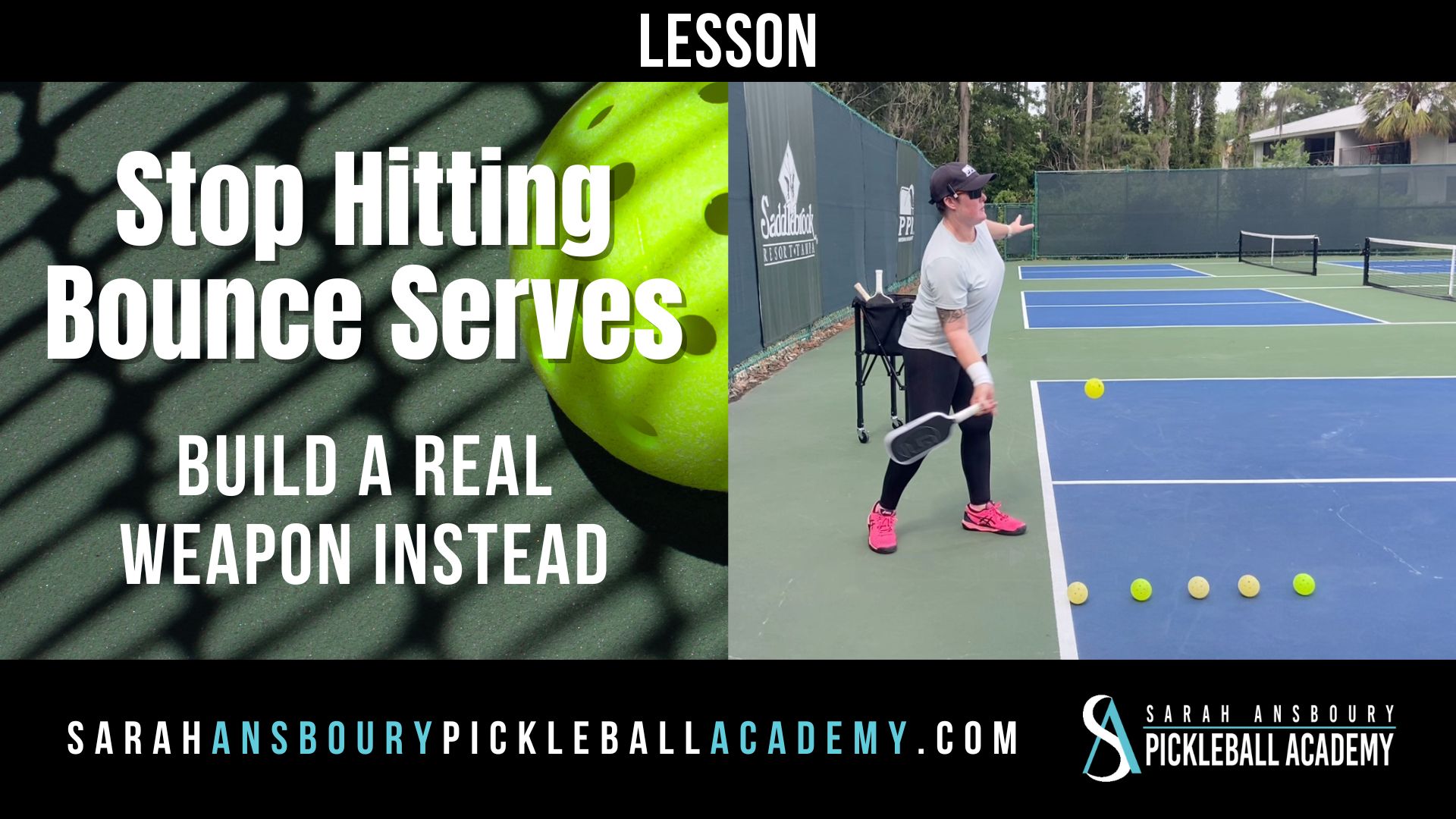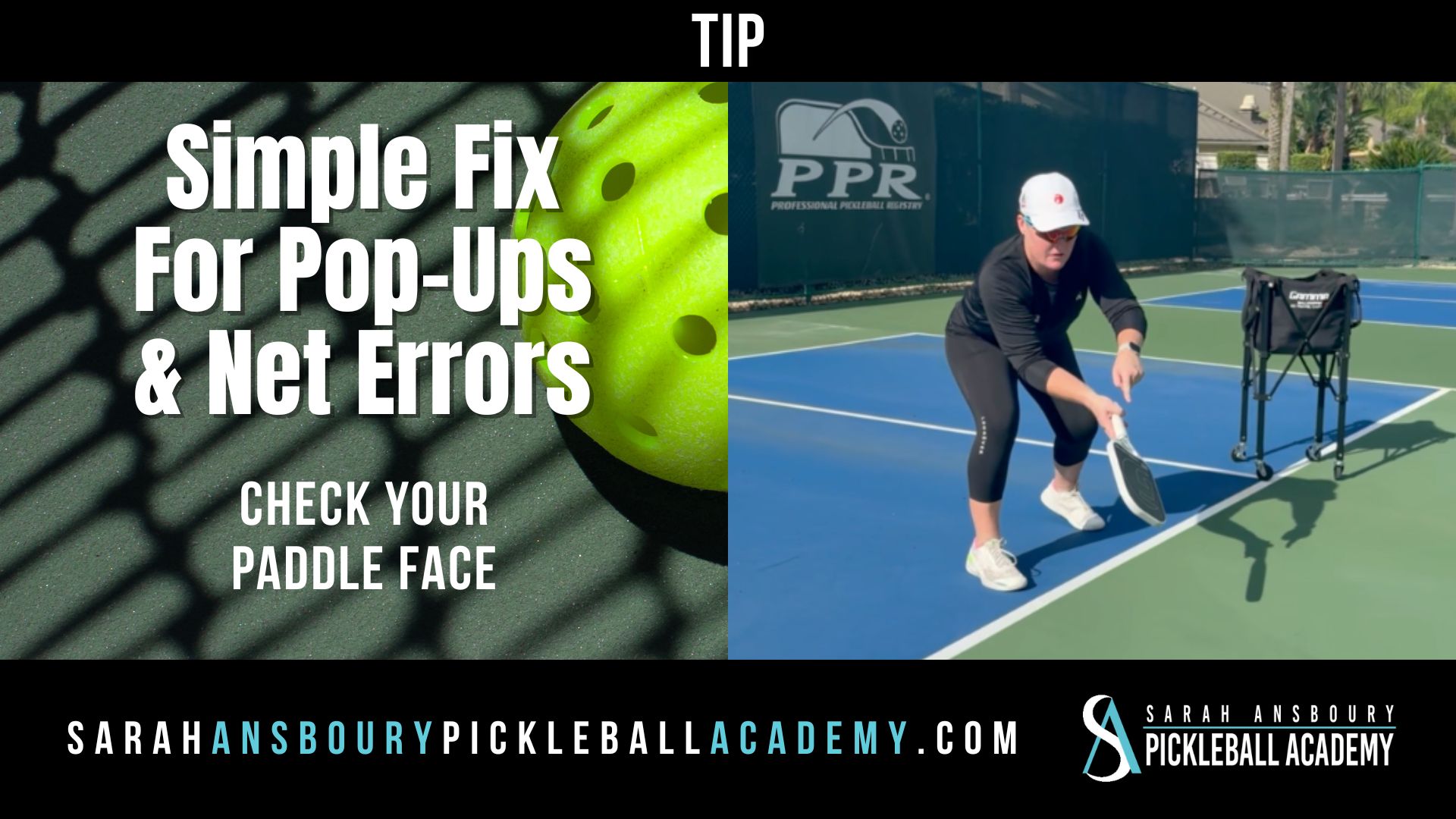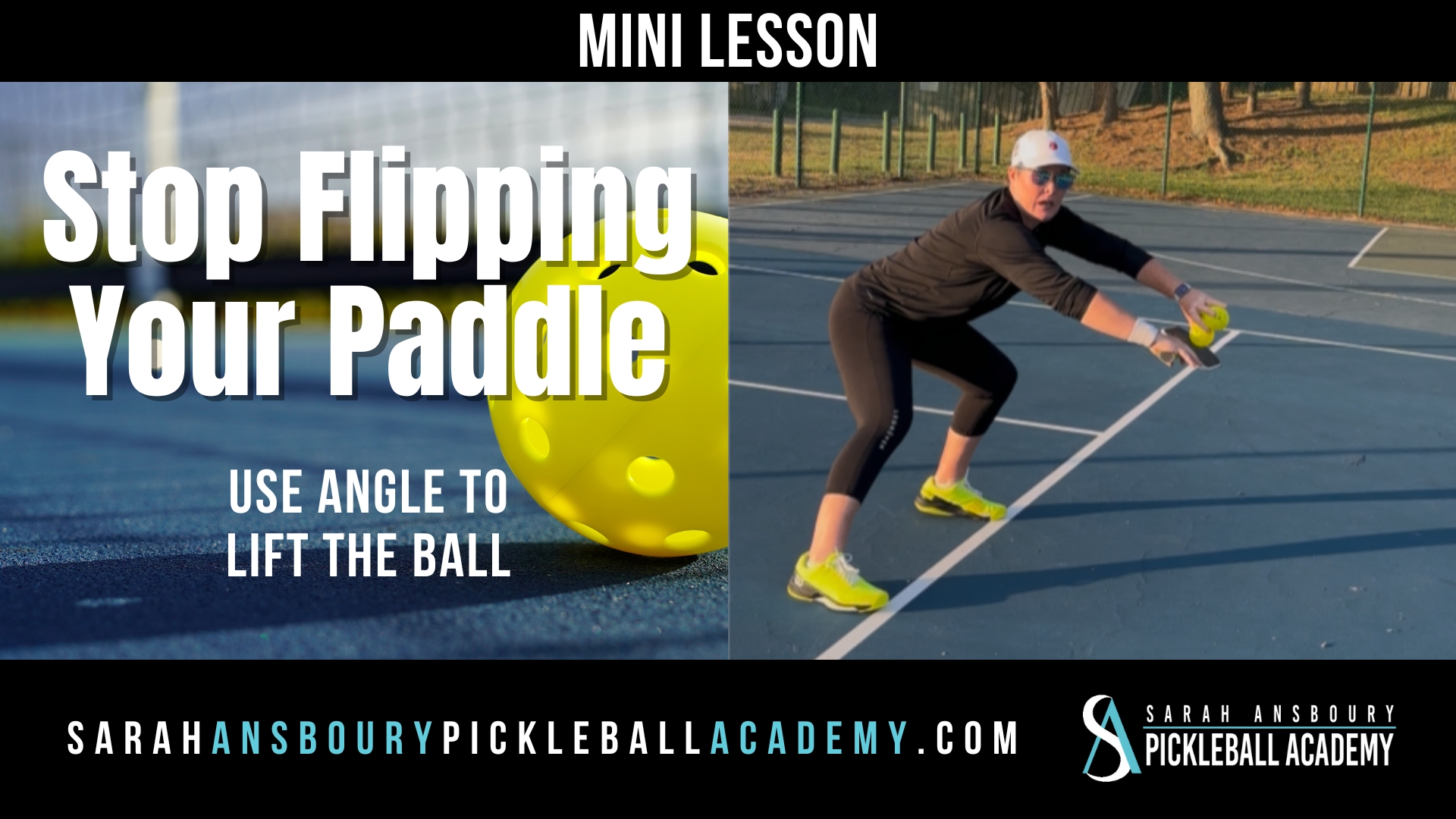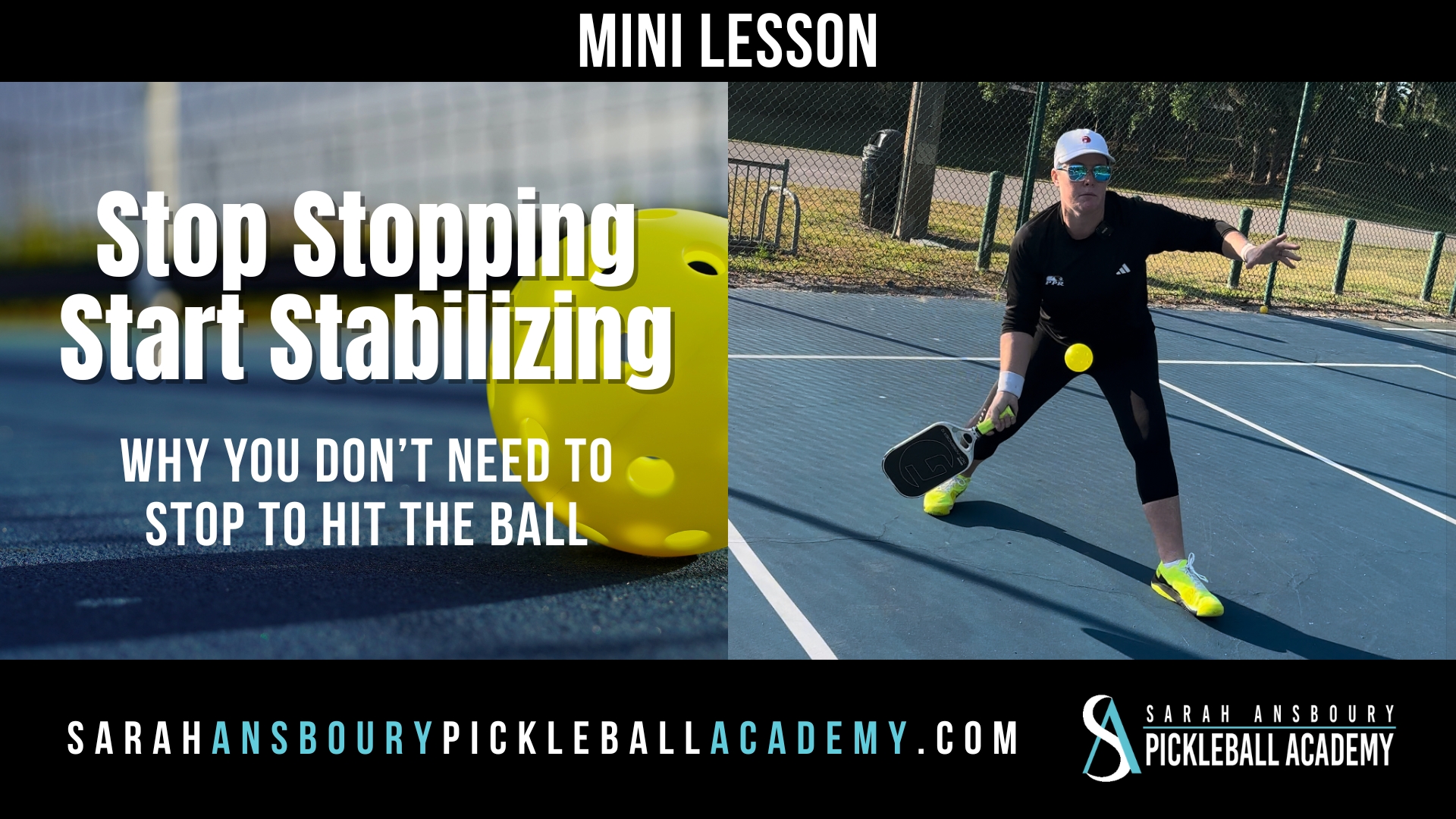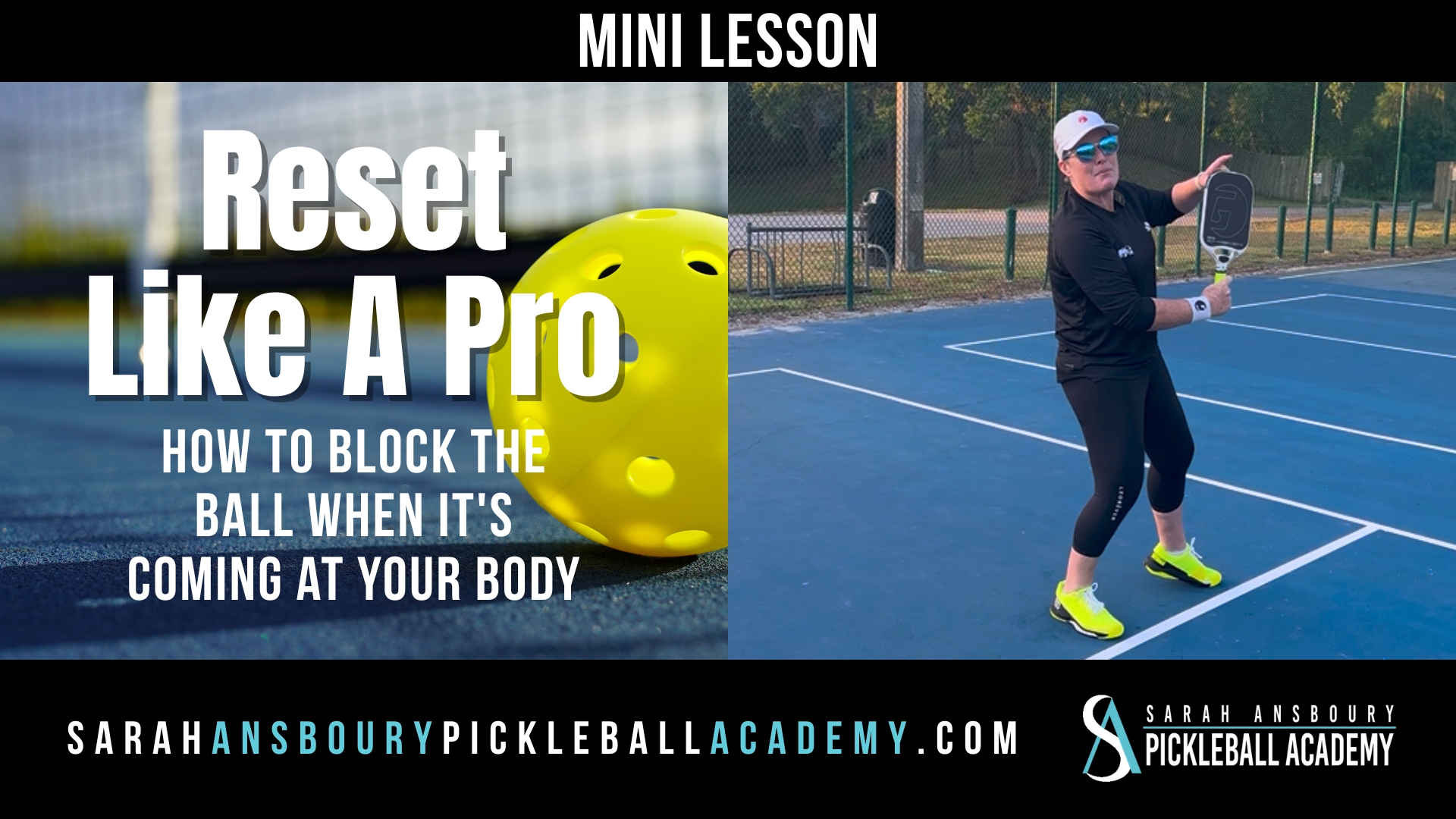I am often asked about pickleball drills. I am asked, “What pickleball drill will improve my game?” Or I’m told, “I drill twice a week, but it doesn’t seem to be having an impact on my game.” Sound familiar? If so, I have some advice for you.
gameplay
I like to incorporate gameplay into my pickleball drills. By this, I mean that you ensure you are focused on tactics that specifically apply to pickleball. Let’s consider our dink drills. Often I see players just hitting one dink after another. I will ask what they are focused on and they will respond, “I’m trying to get the ball over the net.” If this is your approach, let me say you aren’t giving yourself enough credit! You can, and should do more when you spend time on pickleball drills.
strategy: hit to their backhand
Instead on just dinking for 10 minutes, I want you to consider what you might do in a game. One tactic used in any sport is to play to your opponent’s weakness. For many pickleball players, their backhand is weaker than their forehand. So I have created a game for practicing cross-court dinking. In this game, you are in the odd (or left hand) court and can score a point one of two ways:
- If your opponent makes an error, such as hitting the ball into the net; or
- If you force your opponent to hit 3 backhands in one rally.
Incorporating this type of gameplay forces each player to dink offensively. It provides a specific target…and we all know that choosing a specific target clears our mind and focuses our efforts. To be effective, you will need to keep the ball in front of you…a key to dinking effectively.
strategy: Play to Your Strengths
If you watch high-level players, you will often see them move around the ball to hit a forehand. When dinking, many of us 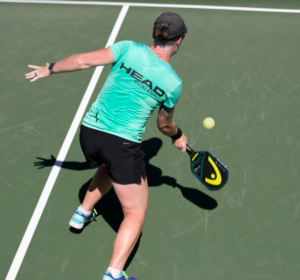 step all the way off the court to take a forehand. This enables us to remain offensive and gives us a better view of the court. It is not about avoiding a shot, but rather playing to our strengths.
step all the way off the court to take a forehand. This enables us to remain offensive and gives us a better view of the court. It is not about avoiding a shot, but rather playing to our strengths.
- If your opponent makes an error, such as hitting the ball into the net; or
- If you force your opponent to hit 3 backhands in one rally.
While “skinny singles” forces one to work on placement, this game takes it to a whole new level. It enables you to work on the placement of your serve or return of serve. It promotes early preparation…both mentally and physically.

